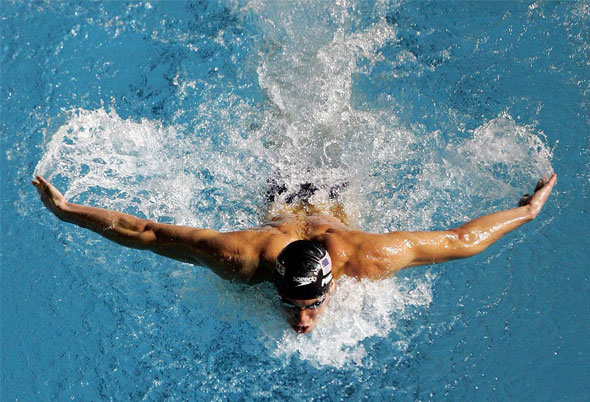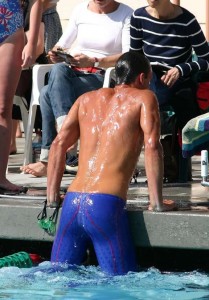Swimming

Swimming is an excellent form of exercise. Because the density of the human body is very similar to that of water, the water supports the body and less stress is therefore placed on joints and bones. Swimming is frequently used as an exercise in rehabilitation after injuries or for those with disabilities.
Resistance swimming is one form of swimming exercise. It is done either for training purposes, to hold the swimmer in place for stroke analysis, or to enable swimming in a confined space for athletic or therapeutic reasons. Resistance swimming can be done either against a stream of moving water in a swimming machine or by holding the swimmer stationary with elastic attachments.
Swimming is primarily an aerobic exercise due to the long exercise time, requiring a constant oxygen supply to the muscles, except for short sprints where the muscles work anaerobically. As with most aerobic exercise, swimming is believed to reduce the harmful effects of stress. Swimming can improve posture and develop a strong lean physique, often called a “swimmer’s build.
out to swim
northern wave
www.goc.org.uk
 Wikipedia says….
Wikipedia says….
The most common purposes for swimming are recreation, exercise, and athletic training. Recreational swimming is a good way to relax, while enjoying a full-body workout.
Other, water based activities such as diving, water polo and triathlons have their own fans and that much desired physique wrapped in a piece of tight fitting nylon, Lycra or some other, newly developed revealing fabric makes for some of the best sights in any sporting activity. No wonder the male water events at the Olympics are often the tickets most in demand.
 Bent says….
Bent says….
However, ‘water sports’ is a completely different thing… a common term used to describe the act of urinating, watching urination or being urinated upon during sex… also known as a golden shower. Try not to get the two terms mixed up in your online profile.
